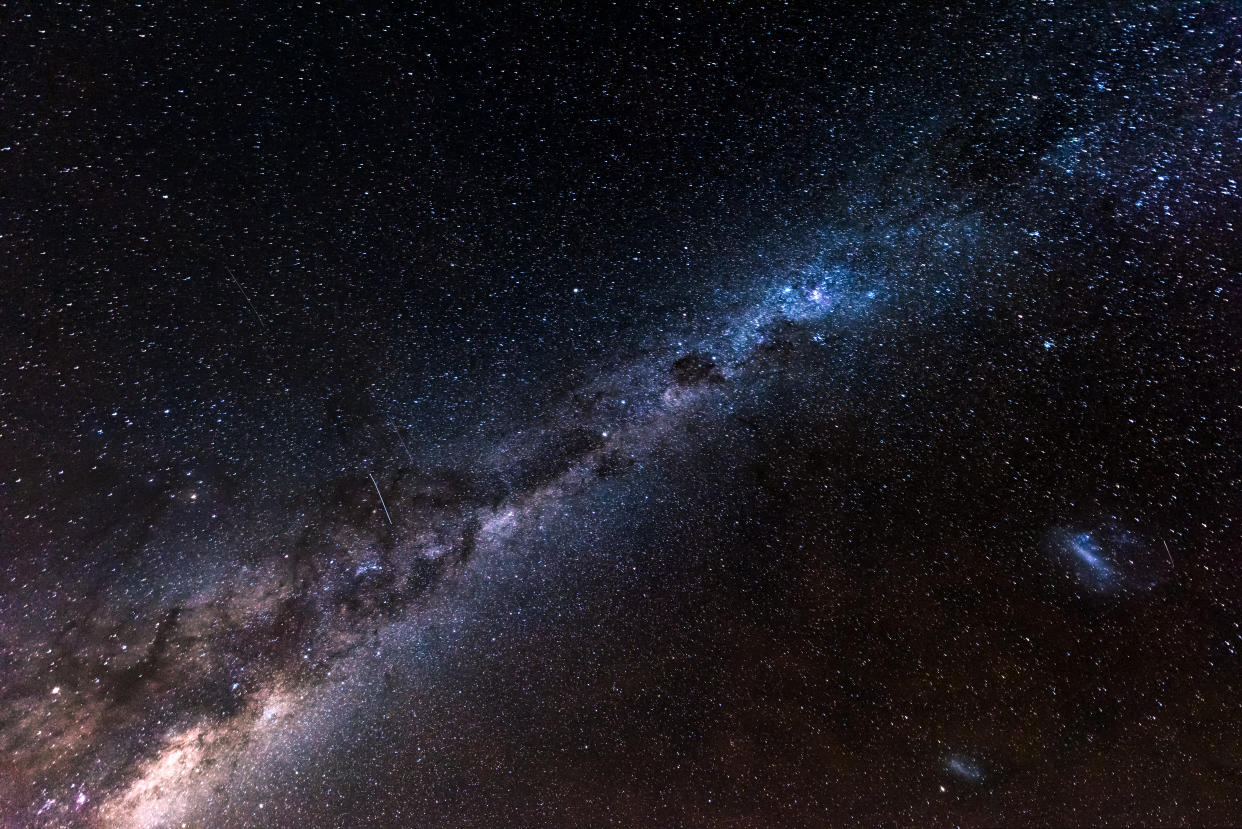Astronomers just found the edge of the Milky Way galaxy

Astronomers have found the edge of our own galaxy, the Milky Way, using the movement of nearby galaxies to work out how large it is.
The Milky Way is mind-bogglingly big: 1.9 million light years in diameter, it turns out, more than 15 times wider than the shining spiral disc part it is named after.
Stretching far beyond that disc is a halo of invisible “dark matter” that is extremely difficult to measure because it emits no light.
The findings were published in a pre-print paper on arXiv.
Read more: Star hurled across Milky Way by new, unseen kind of black hole
Scientists from Durham University measured the movements of objects around the Milky Way to work out where the Milky Way came to an end.
They used simulations of how large galaxies form, and worked out that at the “edge”, the velocity of other orbiting galaxies dropped sharply.
Durham University’s Ali Deason and her team found a similar “drop” at 950,000 light years out from the centre of the Milky Way.
That means the diameter of our galaxy is around 1.9 million light years.
Read more: Huge, bizarre objects spotted right next to the Milky Way’s central black hole
The scientists say it’s not simply dark matter in the galaxy’s outer region – there are still stars, although not as many as in the Milky Way’s central disc, Science News reported.
Deason said: “Both have a well-defined edge. The edge of the stars is very sharp, almost like the stars just stop at a particular radius.”
The researchers wrote: “In many analyses of the Milky Way halo its outer boundary is a fundamental constraint. Often the choice is subjective, but as we have argued, it is preferable to define a physically and/or observationally motivated outer edge.
“Here we have linked the boundary of the underlying dark matter distribution to the observable stellar halo and the dwarf galaxy population.”
"There is great hope that future data will provide a more robust and accurate measurement of the edge of the Milky Way and nearby Milky Way-mass galaxies than the one we have presented here."

 Yahoo News
Yahoo News 

